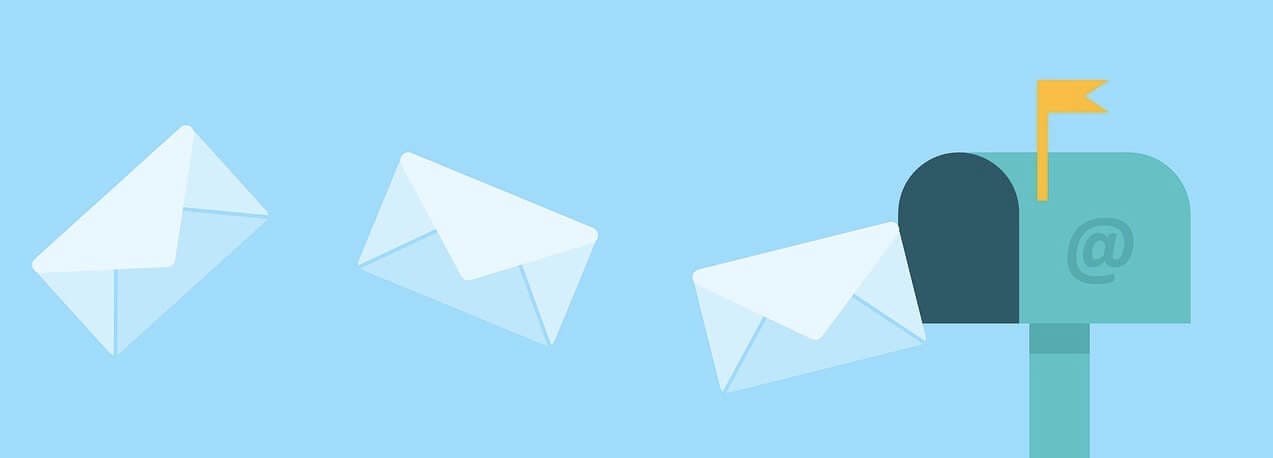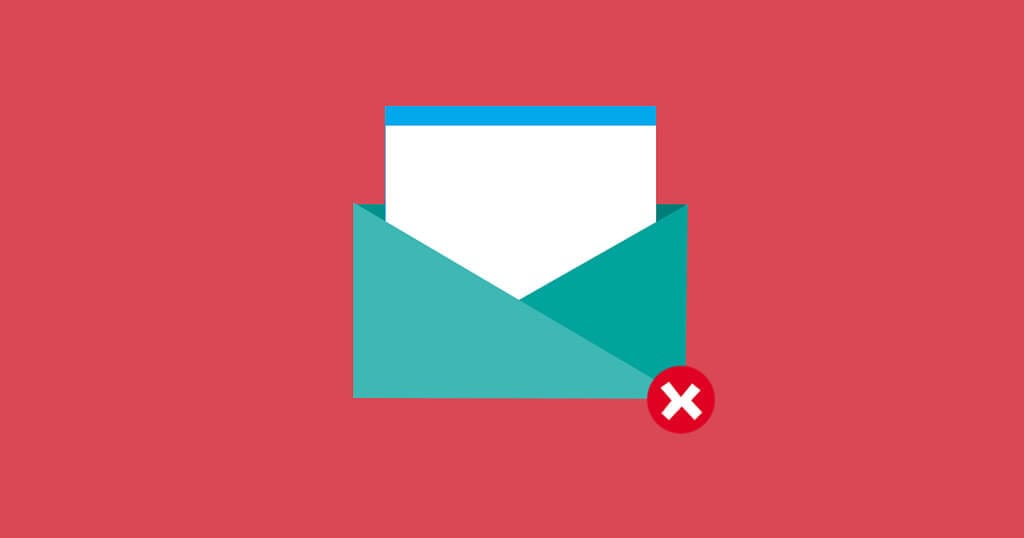SPAM: Evita que tus correos acaben en la papelera

¿Cómo evitar hacer Spam en email marketing?
La imagen positiva o negativa que se refleja en la mente de las personas tras ser impactados por tus campañas de marketing indica el éxito o el fracaso de las mismas.
En otras palabras, esa campaña puede significar la fidelización de un cliente o la pérdida definitiva del mismo.
¿Evalúas los posibles factores en el lanzamiento de una campaña de email marketing? Existen múltiples factores para evaluar el éxito o fracaso de una campaña.
¿Entre esos factores?
⚠️ El porcentaje de aperturas.
⚠️ La tasa de rebote.
⚠️ El número de clics en los enlaces que tenga ese email.
⚠️ Un volumen de usuarios que marcaron el correo como no deseado (Spam).
Correo no deseado [Spam]
Este último factor es también conocido como el problema del Spam en email marketing. Nunca podrá ser extinguido al 100% pero sí que puede ser controlado por ti en una gran mayoría de casos.
Las diferentes herramientas de envío de emails disponibles en Internet te ofrecen diferentes soluciones. Por ejemplo, la funcionalidad de envío Smartdelivery.
De esta y configuraciones especiales para hacer envíos de Mailing de calidad te hablaré en este artículo. Daremos respuesta a:
❓¿Por qué debes tener sumo cuidado con el tema del Spam a la hora de hacer email marketing?
❓¿Cuáles son los detonantes para que un correo sea marcado como spam? ¿De qué manera evitarlo en función del origen del problema?
❓¿Cómo evitar ser marcado como Spam por los gestores de correo o por los usuarios?
¿Quieres saber más sobre el email marketing?
▶️ Toda la información sobre el email marketing y el poder del correo electrónico ◀️
¿Por qué debes evitar el spam en tus envíos?
El Spam, aunque no lo parezca, da una muy mala imagen a la marca que envía ese email. Acarrea muy graves consecuencias en cuanto a sus resultados.
¡Esto no es todo!
El Spam también tiene consecuencias muy negativas. Tanto para la dirección de email como para el “dominio” de la cuenta que hace esos envíos.
Una reputación que se daña en email marketing lo tiene realmente complicado para poder volver a mejorar prestigio. Todo sumado a que la percepción del usuario sobre el negocio cambia casi radicalmente.

Penalización del dominio
Hace varios años, algunos servidores entre ellos Google en su Gmail, introdujeron varios cambios que afectaron de forma radical a las campañas de email marketing.
Desde entonces, el buscador tiene potestad para clasificar los correos según convenga. Google recibirá tu email, sí. Y de forma automática lo enviará a principal, social, promociones, actualizaciones o a correo no deseado.
Otros servidores o ISPs, como Hotmail, también clasifican de forma automática los mensajes. Considerará si es correo electrónico no deseado o no en función la reputación de esa cuenta.
En este sentido, encontramos algunos de los principales errores más comunes cometidos en las estrategias de comunicación por email. No tener en cuenta los requerimientos de configuración del dominio utilizado y de las herramientas de email marketing.
Así como la propia configuración de la cuenta de correo.
Pérdida de credibilidad
En plena sociedad de la Información, muchas empresas emplean el email marketing para ejecutar sus campañas publicitarias masivas. Sin embargo, olvidan en algunos casos que cada cliente es diferente y tiene sus prioridades.
💡 EVITA EL SPAM
Una mala segmentación y un posterior mal envío del correo, puede comportar que el público interprete dicho email como Spam
Una vez que ocurre esto, y automáticamente, los siguientes emails irán a la bandeja de correo electrónico no deseado (o también conocido como el dichoso “spam”), sin recepción por parte del usuario.
Piensa en la mala imagen que estás dando a tu negocio cada vez que esto ocurre en tus envíos; pasas de ser una marca de interés, a ser un “pesado” y terminar con tu reputación cayendo en picado.
Cuáles son las principales causas del Spam en email marketing y cómo evitarlas
Por tanto, es imprescindible tomar algunas precauciones para cumplir con el objetivo de alcanzar al público o usuario de forma amistosa y amena.
¿Sabías que simples prácticas como utilizar muchas mayúsculas en el asunto pueden ser consideradas como spam y convertir tu campaña de email marketing en un fracaso?
Abusar en la utilización de términos muy comerciales como “gratis”, “promoción”, “oferta”, etc. o sinónimos de los mismos, así como enviar un correo con muchos enlaces o únicamente con imágenes, también te puede penalizar.
Estos son sólo algunos de los errores más comunes que se me vienen a la cabeza, pero para que me sigas con más detalle, vamos a ver algunas consideraciones para evitar ser marcado como spam según tu correo vaya a ser:
- Rechazado por los ISPs o gestores de correo (Gmail, Hotmail, etc.).
- Rechazado por los propios usuarios.

¿Cómo evitar ser marcado como spam por los ISPs?
Con todo, uno de nuestros objetivos al enviar un correo electrónico que forme parte de nuestra campaña de email marketing, es evitar que los ISPs marquen como spam aquella información que queremos hacer llegar a nuestros clientes.
Para evitar caer en esta trampa, sigue paso a paso el procedimiento que te explico a continuación.
Personalizar tu dominio
No ocurre con todas las plataformas, pero sí con una gran mayoría, en las que deberás cumplir algunos requisitos para pasar la primera criba de los servidores.
Para empezar, deberás personalizar el dominio por el que realizas tus campañas de email marketing.
“Así, conseguirás evitar que tu IP sea compartida con otros clientes que utilicen la misma plataforma que tú y lo hagan de forma intrusiva.”
Una vez tengas seleccionado tu dominio, a través de la opción “Administrar DNS” del servidor de tu dirección de correo, tendrás que crear un nuevo registro CNAME que apunte hacia tu dominio web principal.
Generalmente, para comprobar que esta configuración se ha actualizado correctamente, tendrás que introducir el nuevo dominio personalizado en tu herramienta de email marketing y verificar que el mismo se encuentra activo.
Modificar los registros SPF
A partir de aquí, y antes de empezar a realizar campañas de marketing, deberás asegurar que tu plataforma de envío es reconocida por el servidor de correo como una herramienta segura para los servidores.
Esto suele ser una modificación manual o solicitada a soporte según el tipo de servidor hosting que utilices, y será la misma plataforma de email marketing la que te indiqué los parámetros que has de facilitar para ello.
Hacer una prueba de envío
Una vez conseguido todo lo anterior, debes realizar una prueba de envío para comprobar que todo está correcto.
“No te lo tomes como cualquier prueba y realiza un auténtico simulacro para asegurarte que tus envíos entran y se visualizan correctamente.”
Según muchos expertos, el envío del primer correo es clave para que los siguientes emails que se envíen a los clientes puedan tener el efecto deseado.
Diseño correcto de la newsletter y revisión del código HTML
Finalmente, la composición de los emails es otro elemento a tener en cuenta. Aunque no lo parezca, los ISPs diferencian entre el cuerpo del correo y los códigos HTML. Por tanto, cada elemento utilizado será mirado con lupa.
No obstante, algunas herramientas de email marketing suelen poner a tu disposición un informe spam que te permite valorar la idoneidad de tu correo, así como plantillas prediseñadas por las que evitarás problemas.
En caso de no usar una plantilla prediseñada, y antes de realizar el envío, es fundamental filtrar el mensaje por el informe spam para poder recabar la opinión del sistema.
Hay que ser previsor antes de acabar en la bandeja de correo electrónico no deseado del usuario, ¿no te parece?
¿Cómo evitar ser marcado como spam por los usuarios?
Superar los filtros de todos los ISPs y evitar que un servidor envié tu correo a la bandeja de spam, es sólo el primer paso.
No olvidemos que el usuario también tiene la capacidad de desplazar nuestros emails a la bandeja de correo electrónico no deseado.
Además, cuando realiza dicha acción, el servidor pasa a enviar automáticamente todos nuestros siguientes correos a la misma.
Utilizar una redacción persuasiva
Siempre deberás cuidar la redacción de tus correos y evita redactar tus emails con un estilo demasiado comercial.
Aunque parezca mentira tener que recordarte esto, hay muchos usuarios reciben numerosos correos al día y no quieren perder el tiempo con puro email promocional.
Sé un poco más formal. A la mayoría de tus suscriptores no les gustan los emails excesivamente recargados con signos de admiración, emoticonos o de otro tipo como el del dólar.
También debes evitar el abuso del modo imperativo en tus correos, con frases del tipo “haz clic aquí” o frases ambiguas o poco claras.
Evita usar lenguaje muy comercial
Creo que ya lo he dicho en otras ocasiones, pero no está de más insistir en el tema.
Términos como “gratis”, “gratuito”, “descuento”, “compra ahora”, “promoción”, “oferta” o similares no harán más que perjudicarnos y aumentar las posibilidades de que se nos envié directamente a la bandeja de spam.
Por ello, ponte en la piel de una persona que no para de recibir correspondencia comercial en su buzón de casa y por internet. ¡A la mayoría esto no le gusta!
Con el email marketing pasa exactamente lo mismo; a las personas no les gusta recibir promociones comerciales de forma muy explícita y los gestores de correo lo saben y penalizan bastante estas cosas.

Seguir una frecuencia de envío más o menos regular y no abusiva
Otro elemento que muy pocos tienen en cuenta, es el envío indiscriminado de emails.
Como he dicho anteriormente, el usuario tiene un tiempo limitado y no quiere perderlo eliminando emails de temas que ya ha leído antes o con información similar.
Del mismo modo, si un usuario recibe constantemente correos de un mismo remitente, será enviado casi con total seguridad a la bandeja de correo electrónico no deseado afectando a la imagen y reputación del dominio.
Por ello, segmenta tu base de datos y calcula muy bien los períodos de tiempo antes de ejecutar cada una de tu campaña de email marketing.
Recomendaciones finales
En las campañas de email masivo te enfrentas a dos enemigos muy diferentes (máquinas y usuarios) por un único objetivo, no acabar en la bandeja de spam.
El primero, al que debes vencer una máquina, hablo de los ISPs o gestores de correo de plataformas tan conocidas como Gmail o Hotmail.
Su inteligencia artificial nos puede acabar mandando a la bandeja de correo electrónico no deseado.
Por tanto, es recomendable combatirle con sus propias armas. Para ello:
- Personaliza tu dominio de envío (tu dirección IP puede ser tu peor enemigo), y posteriormente modifica los registros SPF en tu servidor de correo.
- Realiza un envío de prueba, discreto, sin llamar la atención y acabar en spam por haberte lanzado antes de tiempo al vacío.
- Revisa el código HTML si usas un diseño de newsletter específico.
Ahora, si superas los filtros de los ISPs, tu siguiente rival serán tus propios suscriptores (ya sabes, tiene la misma potestad que los servidores de mandarte a spam y no volver a saber nada de ti). Así que:
- Cuida tu redacción. Sé cordial, comprometido y persuasivo con tu cliente. En pocas palabras, cuídalo e intenta ser convincente a la hora de promocionar tu producto.
- Evita términos comerciales que provoquen la ira del cliente, así como signos de admiración, el modo imperativo y frases poco claras.
- Realiza envíos con la frecuencia adecuada. Una rutina diaria puede desesperar al cliente y mandarnos a spam, mientas que el contrario extremo podría provocar el olvido.
Así que, ¡ya sabes! Crea emails con mensajes sugerentes, con un formato único, una redacción agradable y una frecuencia de envío que respete los horarios de tus usuarios.
Recuerda que tu objetivo es tener contentos a tus suscriptores y preservar la imagen de tu empresa para triunfar en tus campañas de email marketing.
¿Qué otras recomendaciones podrías darnos para evitar el Spam? 👇🏻

